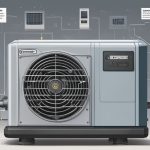Large, wood-sided station wagons are a thing of the past, but the concept lives on in a small number of practical and luxury wagons. Wagons are usually based on an equivalent sedan, sharing the sedan’s performance and features while adding utility with a rear liftgate and flat-folding rear seats. Some, such as the Subaru Outback, Volkswagen Golf Alltrack, and Volvo V60 have all-wheel drive available and a higher ground clearance that help to make them appealing alternatives to an SUV. Likewise, an alternative to wagons can be found in hatchbacks, as detailed in our small car buying guide.
Check out our Best Wagon for 2019-2020
What to Know
Wagons combine the cargo-carrying flexibility of a small or midsized SUV with the comfort, fuel economy, handling, and performance of a sedan.
Key Things to Consider
When looking for a hatchback or wagon, consider the type of driving you do, the climate and/or road conditions, how much power is necessary, how much cargo you will be carrying, and how many people you will be likely to transport. Fuel economy and price are also factors. Wagons can be more fuel efficient than heavier SUVs and many models come at a more affordable sticker price, translating to saving money at time of purchase and later at the pump.
The powertrain for wagons usually ranges from a small-displacement four-cylinder to a more powerful six- cylinder engine, although V8s are available in a limited number of sporty and luxury models. Some wagons can achieve overall fuel economy in the mid 20s Some models, particularly luxury vehicles, have good fit and finish and extra features such as a telescoping steering wheel, automatic climate control, and power seats. Most wagons are available with a full complement of safety equipment. All-wheel drive is available on most wagons and is consumers are urged to consider an AWD wagons because of the safety advantage they can provide. Advanced safety features like forward-collision warning, automatic braking, and blind-spot monitors are all common and highly recommended.
The most practical strategy is to seek a hatchback or wagon that meets your requirements without buying more car than you need. Consider starting with our lists of Recommended wagons and working your way up the line from the smallest and least costly.
What You’ll Spend
You can buy a budget car with hatchback versatility and excellent fuel economy in models such as the Honda Fit and Hyundai Accent for about $16,000.
A step up brings you to a Subaru Impreza Outback Sport, Toyota Prius V, or Volvo V60, which have better-appointed interiors and good fuel economy for the class with prices in the low $20s to about $30,000. The Subaru Outback sells in the upper $20,000 range and offers a good balance of room and price.
Sporty wagons such as the BMW 3 Series sell in the low $40,000 range. They are available with all-wheel drive and retain the upscale packaging and sporty demeanor of their sedan counterparts. The larger Volvo XC70 offers a true alternative to upscale SUVs.
At the top end of wagons, you’ll find the Mercedes-Benz E-Class, which starts at about $60,000 and offers a true combination of luxury, performance, and versatility.For More Check Our Wagon Ratings
Types
Budget Cars
There are several budget hatchback cars that provide wagon functionality at an affordable price. These models typically deliver excellent fuel economy and cargo-carrying flexibility. Such entry-level vehicles often have tight rear seats, small engines, and modest features, although we’re seeing even these budget models offer more upscale equipment. But they can be affordable to purchase and maintain, making them appealing as basic commuters and errand runners. Budget cars can be a particularly good fit for urban drivers and young drivers seeking a first, new car.
Small Wagons/Hatchbacks
More refined than the budget cars, these models are practical transport, with roomier back seats and good fuel economy. Most have sedan counterparts and sport four doors along with the added benefit of cargo-carrying flexibility. These are good alternatives to small SUVs because they have similar utility but are more affordable and fuel efficient.
Family Wagons/Hatchbacks
These wagons are midsized SUV alternatives with family-sedan-like fuel economy, handling, and ride. Their roomy interiors can seat five adults comfortably. Some upscale wagons offer a premium interior, all-wheel drive, and added safety features, but their fuel economy typically suffers compared with down-market models. Prices for such mainstream models are more comparable to those of a family sedan or small SUV. (Consult our road tests regarding your choices. If we haven’t tested the wagon, look for the equivalent sedan road test for insights and Ratings.)
Wagon Ratings
Features
Below we highlight important features for you to consider when purchasing a station wagon.
Engines and Fuel Economy
Most models are only available with an automatic transmission. Models with 5-, 6-, 7- or even 8-speed automatic transmissions or continuously variable transmissions may provide better fuel economy than a traditional manual. It is always smart to check our Ratings before making assumptions, as there are no hard and fast rules for what will deliver the best real-world fuel economy.
Drive Wheels
Most models use front-wheel drive, which usually provides better traction than rear-wheel drive in slippery conditions. Rear-wheel drive is used on some sporty and luxury wagons because of its contribution to good handling. There is a rising number of models that are available with all-wheel drive, providing heightened foul-weather traction. For more information about drive systems see our report on how much traction do you need.
Towing
Some wagons can tow up to 2,000 pounds, although smaller models might be able to tow only about half that weight. Many are simply not recommended for towing. Look at the tow capacity rating and be sure that you get a vehicle that can handle any load you might tow and is properly equipped to do so. Tow packages are typically available as a factory option, or they are outfitted with aftermarket products.
Access
When comparing models, try entering and exiting from all four doors. A well-designed wagon should provide wide doors and enough head room so that passengers can enter and exit easily without bumping their heads. The rear hatch should open and close easily. Most models allow the rear split seat to fold flat, but some leave this seat tilted slightly, making it a challenge to load cargo and keep it in place.
Seating
Most models provide seating for five: two front and three rear passengers. But the middle rear position is often tight and uncomfortable for adults, especially in the budget models. Only the Mercedes E-Class wagon can be equipped with a small rear-facing third-row seat that increases passenger capacity to seven. It is suitable only for children. Access is through the rear hatch.
Cargo Space
Cargo space can vary a great deal between smaller and larger models. All models have fold-down rear seats that can expand the cargo space. A split-back design is the most versatile because one side can be folded down while a passenger occupies the other rear seat.
Safety
Wagons and hatchbacks can be very safe on the road, as indicted by Consumer Reports’ safety Ratings, which include assessments of crash-avoidance capabilities and of crash-test results based on tests performed by the federal government and insurance industry. Due to their size, subcompact models typically will not provide as much occupant protection as larger models. Our road tests detail issues regarding child-seat installation and the adequacy of front and rear head restraints.
All rear seating positions have top-tether and lower LATCH attachments. Chest-level side airbags are common for front-seat passengers, too. Head-protecting side airbags, usually in the form of a side curtain that covers front and rear side windows, are very common and we recommend them.
Electronic stability control is a computer-controlled feature that automatically and selectively applies brakes to prevent an impending sideways slide. We highly recommend ESC, and it became standard in all passenger cars as of the 2012 model year. A proven lifesaving feature, ESC can help to reduce the risk of a rollover and other crash types. Another feature, traction control, can help you to get going on a slippery road but doesn’t aid in a sideways skid. (Learn more about car safety.)
Emerging Safety Technologies
The latest automotive safety advances include telematics systems that alert emergency personnel if an airbag deploys, lane-departure warning systems that sound an alert if you change lanes without signaling, rear-view cameras to prevent back-over accidents, and blind-spot warning systems that indicate vehicles driving in the blind spots to the side and rear of you. Automatic-braking systems are also highly recommended. These apply the brakes if you’re approaching the car ahead too fast and ignore an audible or other warning that alerts you to the situation. Such premium safety features are not available on most small cars, but over time, they are expected to trickle down from more upscale models. Some wagons, notably GM vehicles and those from Audi, BMW, Mercedes-Benz, Subaru, Toyota, and Volkswagen, offer a cellular-based telematics subscription service that provides emergency aid and numerous travel-related services. (Learn more about car safety.)
Entertainment and Convenience
The latest mobile electronics enable cars to deliver the fidelity of home theater, along with cell-phone connectivity and navigation guidance. There is a wide range of information and entertainment features available from the factory, and more so available through the aftermarket.
Audio System
The standard car-audio package is a stereo radio tuner and often an in-dash CD player with speakers left and right and fore and aft. An upgraded system typically has a higher-watt amplifier, so you can play music loud with minimum distortion, and more and better-quality speakers to enhance clarity and sound separation. Top-level systems add digital sound fields, noise-canceling, surround sound, and hard-drive music storage.
Depending on the package, an audio upgrade can add many hundreds of dollars to a car’s sticker price. Cars at every price level include a USB port where you can plug in a smartphone or MP3 player to recharge and play music through the car’s audio system.
Satellite and HD Radio
Subscription-only satellite radio offers broad channel selection, catering to a variety of musical and information interests, much like cable TV. Most vehicles offer satellite radio readiness in some audio systems.
HD Radio allows conventional (or terrestrial) AM and FM stations to broadcast their content over digital signals with higher fidelity. It also allows stations to add more programming over several additional channels that can be broadcast alongside a station’s main frequency. This function can be used for delivering traffic or weather information, or more diverse music content.
Navigation Systems and Connectivity
In-car navigation systems can be a valued feature if you often drive in unfamiliar territory. They typically retail for about $750 to $1,500 when offered alone but are often bundled with other features, such as a backup camera or a high-end audio system, which can add another $1,000 or more. Built-in systems have large, clear screens that are in the center of the dashboard and have generally intuitive controls. They are integrated nicely into the car, and some use touch-screen displays that make it easy to put in destinations and navigate through menus. Some can also respond to voice commands, giving you the added safety of keeping your eyes on the road and hands on the wheel. For a fee, many systems can provide real-time traffic reports, which can alert you to congested traffic, accidents, or road construction. But portable GPS units can offer most of those abilities for much less money. (See Ratings and learn more about portable GPS navigators.)
Bluetooth connectivity is now standard in almost all new cars, enabling wireless devices such as cell phones to communicate wirelessly with the car’s audio system. That results in convenient, hands-free phone operation. In addition, some new infotainment systems can interface with your smart phone using apps to stream music and other Internet-sourced data to the car.
Popularized by GM’s OnStar, telematics systems use a combination of cellular telephone and Global Positioning System (GPS) technology to connect drivers with a call center staffed 24 hours a day, seven days a week, at the touch of a button. For a monthly or annual fee, such concierge services can provide directions or summon emergency aid based on your vehicle’s location.See Our Wagon Ratings for More
New vs. Used
When in the market for Our wagon, you should first consider whether to buy a new or used car. Buying a brand-new wagon or hatchback certainly has its benefits. Most notably, new cars can have the very latest safety gear and engineering improvements. And with a new car, you know what you’re getting, and it is backed by a comprehensive factory warranty. You don’t have to worry about potential service problems or concealed collision damage. Further, you can have your choice of color, trim line, and option level. And financing rates are typically lower than for a used vehicle.
The key drawback with buying a new car is rapid depreciation. A new car can shed a third of its value in its first two or three years on the road. If you have financed the new car with a low down payment, you can easily find yourself “upside down” on the loan, where you owe more than the car is worth.
Used cars can be a welcome alternative. The used-car market is about three times the size of the new-car market, so there’s certainly plenty of choice out there. One of the best strategies is to find a car that you like that’s only a couple of years old. Such a car has already taken its biggest depreciation hit, which works to your advantage, but it should still have most of its useful life ahead of it. Modern cars, if soundly maintained, can stay on the road for 200,000 miles or longer. Rust, for example, isn’t nearly the problem it was years ago. Solidstate electronics have eliminated the need for a lot of the regular servicing necessary in the past.
The key to selecting a good used wagon or hatchback is to focus on reliability, even when a prospective automobile is still covered by its original factory warranty. Look for a car that has done well in our Reliability judgments. For many years, the reliability stars in our records have mostly been Japanese-nameplate models, especially those from Honda, Nissan, Subaru, and Toyota.
Our reliability scores are no guarantee, of course, but they do carry the weight of probability. If you shop for wagons with top-notch reliability scores, the odds are on your side. At the same time, every used car is unique. A careful prepurchase inspection remains a vital part of the process. If you do your homework and take care in the car selection, a used wagon can save you significant money in the long run.
Whether buying new or used, it is important to do research if you are to choose a good model, and follow that up with effective negotiation.
Source : Consumer Reports




